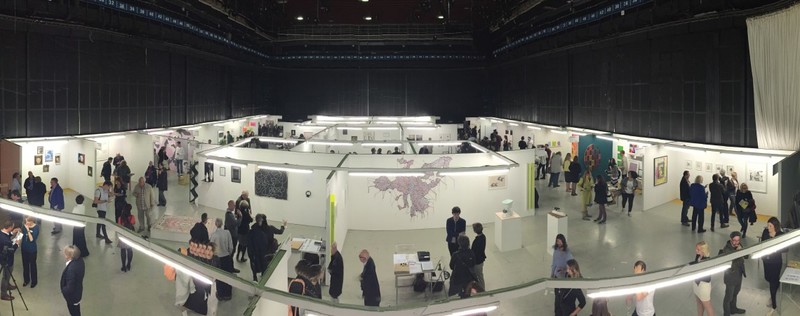The Other Gallery
Galleries, and particularly established galleries, cost a lot to run. It is an obvious fact, perhaps; a large percentage of the gallery’s appeal to the visitor, the artist and the potential client is the air of expense, exclusivity and opulence granted by these clean-lined boxes of culture.
We visit a gallery to become part of that world, and the silent space behind that door on Bond Street or in a courtyard in Mayfair offers us the chance to glimpse a world of dominated by the pristine, occupied by intelligent, thoughtful and interested people. The gallery creates a doorway into a world where we can connect with art in a way that is engaged, respectful and replete with understanding, free of clutter.
The gallery, in its philosophy, is a place wherein the most insightful and passionate individuals can exhibit works by the most exciting talent; art dealers are, by and large, in the artworld due to their own personal passions, their fascination in art, in history, in people. These passions, nothing more, have driven them to this space; a white sanctuary of creativity, eccentricity, awareness.
 New Bond Street, London
New Bond Street, London
At least that’s how it is meant to be. We are all well aware of the difficulties caused by the rising of rents in central urban locations; real estate art hubs like London, New York and Hong Kong have risen at an impressive rate over recent years. The last remaining commercial galleries in Bond Street and Mayfair are jostled by high fashion brands; nobody, even the oldest and most established of galleries, is free from the pinch.
Quality and forward-thinking are always the first casualties. Staging exhibitions becomes less about the artist’s career, and the relationship with the collector, and more about the rent. Innovation becomes difficult. Young artists, who don’t command the prices demanded by gallery running costs, are shut out. The dealers, who didn’t get into this to be a shopkeeper or an accountant, become frustrated as they see finance overshadow intellectual and cultural progress.
The natural response to pressure is sudden, explosive release in another direction. So it becomes obvious to some dealers to cut costs in order to preserve the momentum, creativity and openness demanded by the emerging art market. Luckily we are blessed by opportunity and variety, and by a large number of individuals and organisations who recognise the stymying effect on art that real estate has. There are art fairs, there are unoccupied spaces, there is the internet. The solution is to go viral; to spread and occupy.
 The Manchester Contemporary fair
The Manchester Contemporary fair
Dealers are seeing the benefit of agility; they work with artists first and foremost, and utilise their great passion to drive their careers forward and to build a community. They can speak more deeply with collectors, and help forge relationships that will drive their and their artists successes. Capital city locations are no longer necessary. The recent Manchester Contemporary fair saw exhibitions of serious quality by a number of artist-run spaces or galleries of no fixed abode: PAPER, OBJECT/A, LLE Gallery; these are all galleries that are thriving because of, not in spite of, their lack of a large commercial space. In London we have the likes of Coates and Scarry who run a few high quality shows a year from a space in St James, and spend the rest of their time based from Bristol. Meeting artists, seeing art, learning and, most of all, talking. The internet has seen the rise of interest in buying work remotely, giving small dealerships the opportunity to reach audiences and start conversations, rather than spending their time nailed to a desk in an empty gallery.
By staying small, and keeping strong personal relationships with their artists, these galleries maintain a resolution and radicalism that isn’t just preferred, but necessary to drive art making and exhibition forward. Large central galleries are necessary and wonderful stages for great work, but in order to grow and foster new talent and secure the artworld and the market’s future, the answer lies in innovation.
Lee, contributor
Lee is an independent art advisor active in the UK, US and Hong Kong. He has worked in the arts for fifteen years, both in institutions (the Tate) and as Director at commercial art galleries in London
Content retrieved from: https://www.artvisor.com/journal/the-other-gallery.
